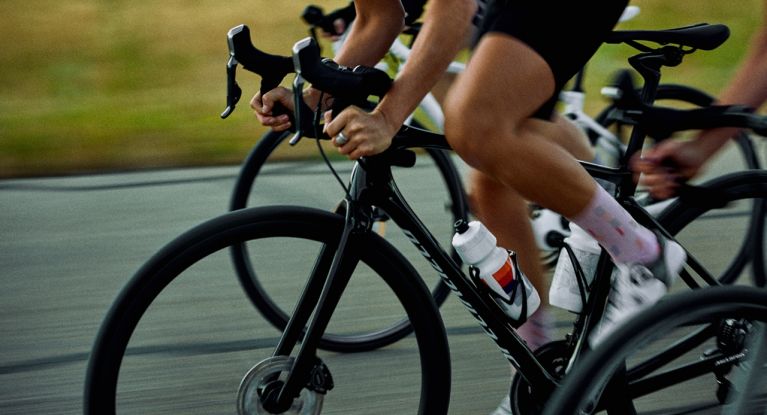
From the outset of development, we partnered with McLaren Applied Technologies to create the smoothest performance bicycles on the planet. We'd like to say that, together, we shattered the mold, but really, our work together has been so revolutionary that it's fair to say there's been no mold to break.
When it comes to compliance, there are two competing schools of thought. In one corner, there's splay. In the other, there's axial compliance. Essentially, splay is the fore & aft movement of the front axle, relative to the frame, as a result of any bending of the frame and fork. Meanwhile, axial (or vertical compliance) can be characterized as the movement of the handlebars, relative to the front axle, as a result of fork, frame, and stem compliance.
The Future Shock features up to 20mm of travel, and it's positioned above the head tube in order to move in a vertical path. So when the front wheel encounters rough terrain, the bike moves up towards your hands and preserves your forward momentum without slowing you down.
Another important fact is that, because the Future Shock is positioned above the stem, the bike's wheels are held together rigidly by the frame. In other words, because the wheelbase isn't changing throughout the suspension's travel, like with traditional system, you get the added benefit of extremely predictable handling.
For many, "smoothness" is a term that's replaceable with "comfort," and likewise, it's been historically treated as a variable that's in the way of speed—you either have a fast bike or a comfortable bike. With the Ruby and Roubaix, however, we set out to find just what happens when smoothness is treated as a component of speed. It was complicated, but our testing clearly proves that "smoother" is indeed "faster."
By creating greater vertical frame compliance, or smoothness, we've been able to enhance the multiple facets of speed across all of the major touch points—fatigue reduction and power input. But instead of just saying that we did it, let's address them individually.

Reducing fatigue is a pretty obvious factor in speed, given that the more comfortable you are, the less tired you're bound to get—especially after a long day over rough terrain. Over the long haul, this also contributes to power, but we've found that a smoother ride also increases your ability to apply constant power. So as smoothness increases, while power becomes less stochastic and more constant, time savings increase significantly.
Smoothness acts as the glue that brings all of this together, and it's why we can confidently proclaim that Smoother is Faster.
The Rider-First Engineered™ philosophy is directly inspired by our relationship with McLaren, meaning that it focuses heavily on data-driven design. After all, to understand the reality of a problem, you need sound data, and this can only be derived from hundreds of hours of testing. Of course, the question begs to be asked: What have we been testing for?
Over the years, our engineers found that riders on smaller frames were experiencing ride characteristics that were inverse to that of their larger counterparts—and vice-versa. For example, where a smaller frame is stiff on the flats, it might under-steer in the corners, while the opposite can be true for large frames. Correcting this required sophisticated instruments to quantify the forces being applied to the frame. In real-world testing, these measured the reactionary forces through the fork, stem, saddle—every conceivable input & output. With an immense supply of data in tow, our engineers were able to create the remedy.

To equalize performance, they found that each size's performance targets required direct specificity. This means that, for every frame size, each tube size & carbon layup is specifically selected with the collected data in mind. The result? The optimal balance of rigidity, weight, and responsiveness across every frame size.